Suede, with its plush and luxurious texture, portrays a certain elegance and class that is unparalleled in the realm of textiles. However, its very nature as a soft, porous material also makes it particularly susceptible to dirt, stains, and water damage. Caring for suede is not just about maintaining its aesthetic appeal but also about preserving its quality and longevity.
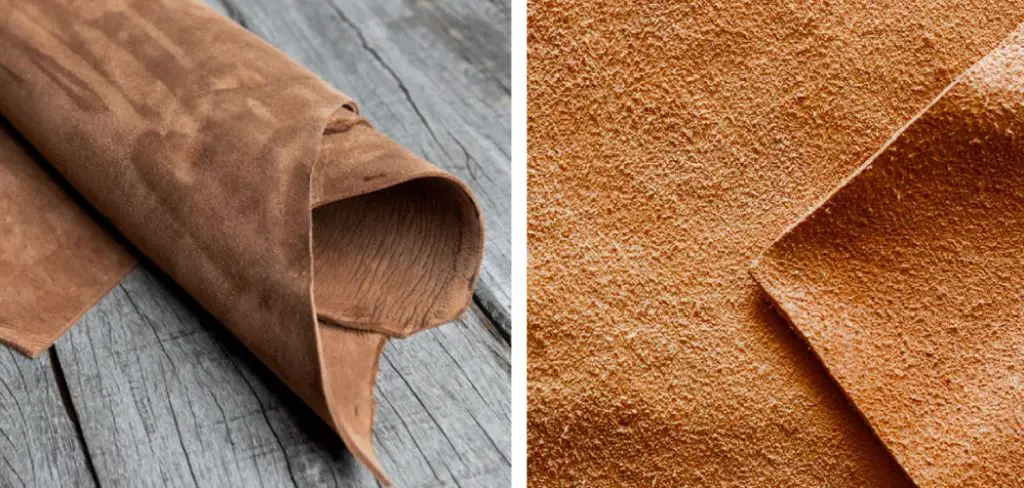
Whether it’s a pair of cherished boots, a treasured handbag, or a coveted jacket, understanding the proper techniques to treat suede is essential. This guide on how to treat suede aims to equip you with the knowledge and step-by-step procedures to ensure your suede items remain in pristine condition, reflecting their original splendor and durability.
What is Suede?
Before delving into the treatment process, it’s important to understand what suede actually is. Suede is not a type of material in itself but rather a term used to describe the finish or texture of leather. Suede can be made from different types of animal skins, such as cowhide, sheepskin, and even deer skin. However, unlike other types of leather, suede is created by sanding the inner surface of the animal hide, resulting in a soft and velvety texture.
You can recognize suede by its distinctive nap, which refers to the raised, fuzzy surface that is created when the leather is sanded. This napped texture gives suede its signature plush appearance and also makes it more susceptible to damage and staining.
Why is it Important to Treat Suede?
Suede is a delicate material, and if not properly cared for, it can quickly lose its appeal and become damaged. Due to its porous nature, suede absorbs dirt, oil, and water easily, making it prone to discoloration and staining. Additionally, the nap can flatten with regular use, resulting in a less soft and plush texture.
Treating suede is important to maintain its appearance and durability. Regular cleaning and conditioning can help to remove dirt, restore the nap, and protect the material from damage. This not only keeps your suede items looking their best but also ensures they last for years to come.
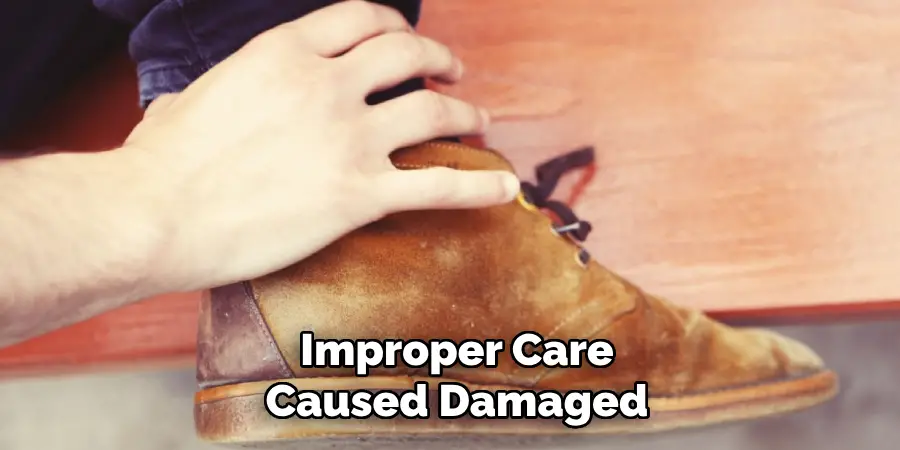
Needed Materials
Soft-bristled Brush:
A soft-bristled brush is essential for cleaning and restoring the nap of suede. It gently removes dirt and debris without damaging or flattening the texture.
Suede Eraser:
Suede erasers are specifically designed to remove stains and marks from suede without causing damage. They are available in most shoe repair stores or can be purchased online.
White Vinegar:
White vinegar is a natural cleaning agent that can help to remove stubborn stains from suede. It’s also an effective deodorizer and can help eliminate any unwanted odors.
Suede Protector Spray:
A suede protector spray creates a protective barrier on the surface of the suede, making it more resistant to water and stains.
9 Step-by-step Guides on How to Treat Suede
Step 1: Clean the Surface
Start by gently brushing the surface of the suede using a soft-bristled brush. This initial step aims to remove any loose dirt, dust, or debris clinging to the nap without applying too much pressure, which could damage the texture. Always brush in the direction of the grain to avoid roughening the nap. This preparation ensures that you are working with a clean surface before proceeding to more targeted cleaning or stain removal techniques.
Regular brushing as part of routine suede care can significantly extend the life and maintain the appearance of your suede items.
Step 2: Remove Stains and Marks
For stubborn stains or marks, use a suede eraser. Gently rub the stain with the eraser in a back-and-forth motion until it disappears. Avoid using excessive pressure, as this can damage the texture of the suede. If the stain is particularly difficult to remove, lightly dampen the area with water and continue to use the eraser until the stain is gone.
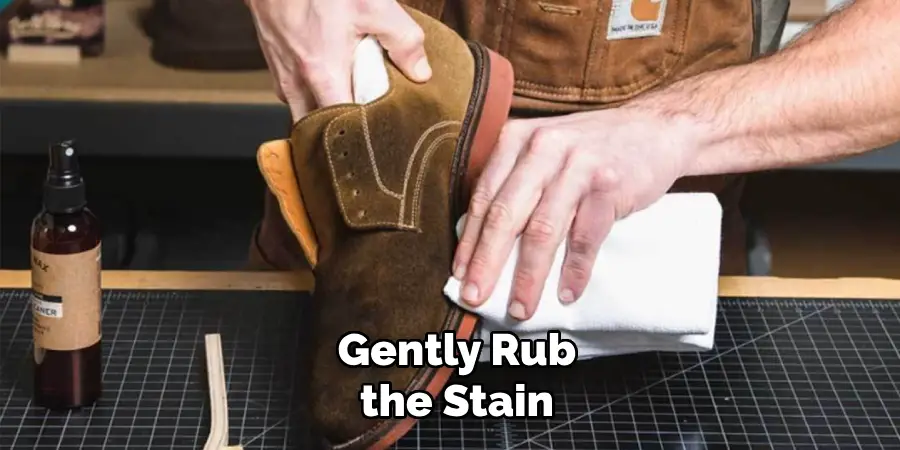
The key to removing stains from suede is to act quickly and avoid letting the stain set. The longer a stain sits on suede, the harder it will be to remove.
Step 3: Tackle Oil Stains
Oil stains can be particularly challenging to remove from suede due to its absorbent nature. To address oil stains, sprinkle a generous amount of talcum powder, cornstarch, or baby powder on the affected area. Allow the powder to sit on the stain overnight, as it works to absorb the oil. The next day, gently brush away the powder with a soft-bristled brush. Repeat the process if necessary until the oil stain is significantly reduced or completely removed. For persistent oil stains, consider seeking professional cleaning services as they have specialized techniques and products that are effective yet gentle on suede.
Step 4: Remove Water Stains
Water can leave marks on suede, but it’s important not to panic if your suede item gets wet. Immediately blot the water with a clean cloth or paper towel and let it air dry naturally. Avoid using heat or direct sunlight as this can cause the suede to shrink or become discolored. Once dry, use a soft-bristled brush to restore the nap. If the water stain persists, use a suede eraser or white vinegar to gently remove it.
Step 5: Deodorize with White Vinegar
If your suede item has an unwanted odor, lightly spray it with a mixture of equal parts water and white vinegar. The vinegar will help neutralize any odors trapped within the suede fibers. Allow the item to air dry and then brush the nap to restore its softness. It’s important to note that the vinegar smell will dissipate as the suede dries. The vinegar solution can also be used to spot, clean and remove stains from suede.
Step 6: Restore the Nap
After cleaning and drying your suede item, the nap may appear flattened or uneven. To restore the suede to its original plush texture, use a suede brush or a clean, dry towel. Gently brush or rub the surface in a circular motion or back-and-forth to lift the fibers and rejuvenate the nap. For areas that are particularly flat, you can use a steam iron. Hold the iron a few inches away from the suede and lightly steam the surface.
Immediately after steaming, use the brush to gently work the nap back to its lush texture. It’s important to never allow the iron to directly touch the suede, as the heat can damage the material. Restoring the nap not only enhances the aesthetic appeal of the suede but also helps to maintain its durability and longevity.
Step 7: Protect with a Suede Protector Spray
Once the suede is clean and dry, it’s essential to protect it from future damage. A suede protector spray creates a protective barrier that repels water, oil, and dirt. Before using any protector spray, always test it on an inconspicuous area of the suede to ensure there are no adverse effects. Follow the instructions on the product carefully, and allow the suede to fully dry before using or wearing it again.
The suede protector spray will need to be reapplied periodically, especially after cleaning or if the item gets wet. This additional layer of protection helps maintain the appearance and durability of the suede.
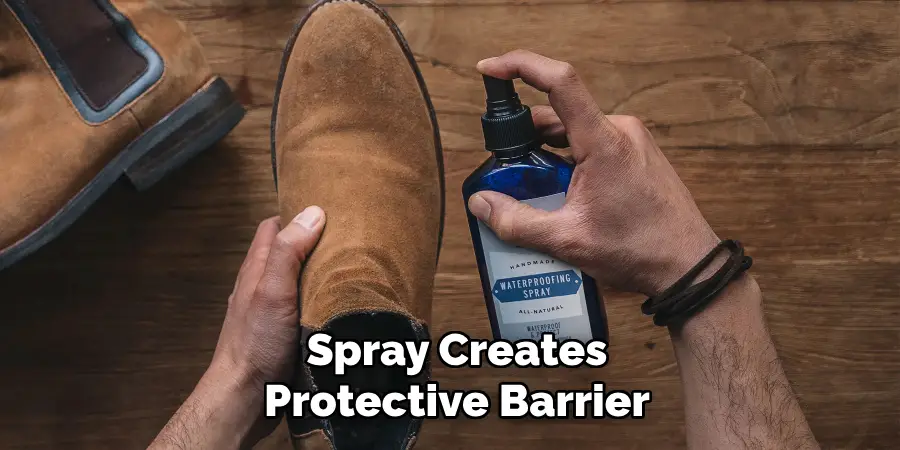
Step 8: Store Properly
Proper storage plays a significant role in maintaining the quality of your suede items. When storing suede, avoid hanging it, as this can cause stretching and distortion of the shape. Instead, lay the suede flat in a cool, dry place away from direct sunlight or heat sources. Avoid storing suede items in plastic bags, as this can trap moisture and cause mildew. If possible, store suede items in a breathable fabric bag to protect them from dust and keep them in good condition.
Step 9: Address Mold and Mildew
If your suede item has been exposed to moisture or stored in a damp area, it is susceptible to mold and mildew growth. If you notice any signs of mold or mildew, immediately take it outside and lightly brush off the spores with a soft-bristled brush. Then, mix equal parts water and white vinegar and use a clean cloth to gently wipe away any remaining traces of mold or mildew. After cleaning, let the suede air dry completely before storing it in a cool, dry place.
Regularly inspect your suede items for signs of mold or mildew and take immediate action to address any growth to prevent damage to the material.
Following these steps on how to treat suede and incorporating regular maintenance into your suede care routine will help keep your suede items looking and feeling their best for years to come. With proper care, you can enjoy the luxurious look and feel of suede without worrying about stains, odors, or wear and tear. Remember to always use gentle techniques and products specifically designed for cleaning suede to ensure its longevity. Happy cleaning!
Troubleshooting Common Issues
Even with meticulous care, suede items may occasionally encounter common issues that can be frustrating. Here are solutions to some of the most frequent problems:
Stiffness after Drying:
If your suede becomes stiff or hard after getting wet and drying, you can soften it again. Use a suede brush to gently lift the nap. For particularly stubborn areas, you can lightly steam the suede and then brush it to restore softness.
Discoloration:
Over time, suede may fade or discolor, especially with frequent exposure to sunlight. To combat this, apply a suede dye or revitalizer, which is available at most shoe repair shops or online. Always test the product on a small, inconspicuous area first to ensure it matches the original color as closely as possible.
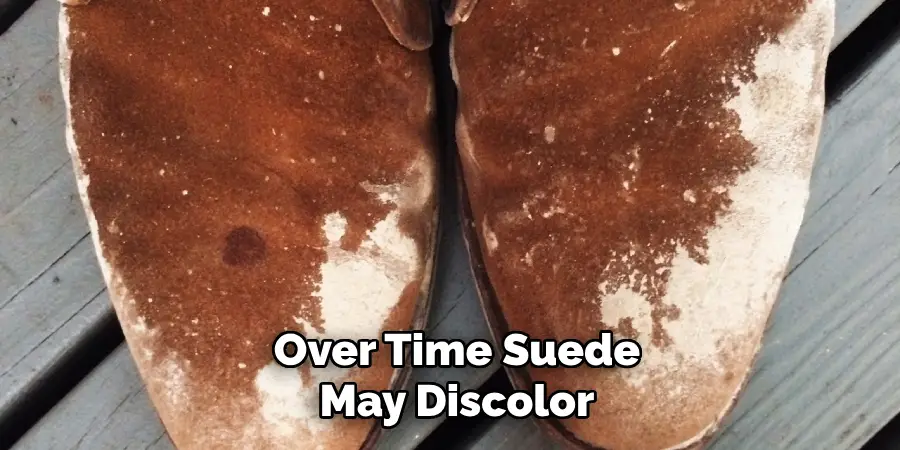
Scratches and Scuffs:
Minor scratches and scuffs can be addressed by gently brushing the area with a suede brush. For deeper scratches, a suede eraser can help minimize the appearance, followed by brushing to restore the nap.
Flattened Nap:
Areas of heavy use might result in a flattened nap. To rejuvenate these spots, use the steam method mentioned earlier or hold the suede over boiling water, allowing the steam to fluff up the fibers, and then brush gently.
Persistent Odors:
If odors persist after the vinegar treatment, placing the suede item in a sealed bag with baking soda for a few days can help absorb the remaining odors. Make sure to brush off the baking soda thoroughly afterward.
Waxy Build-Up from Sprays:
Some protector sprays can leave a waxy build-up over time. To remove this, lightly brush the area with a suede brush, and if necessary, clean the area with a suede cleaner designed to remove build-up.
Remember, the key to maintaining suede is regular care and addressing any issues as soon as they arise. By following these troubleshooting tips, you can ensure that your suede items remain in pristine condition for years to come.
Maintenance and Care Tips
To keep your suede items in top condition, here are some maintenance and care tips that go beyond cleaning and address the day-to-day handling of suede materials.
Avoid Water Exposure:
While some minor exposure to water is inevitable, try to avoid heavy downpours or stepping in puddles when wearing suede shoes or carrying suede bags. Water can cause stains and alter the texture of suede.
Use a Suede Protector Regularly:
Applying a suede protector spray after each cleaning can significantly extend the life and appearance of your suede items. It acts as a shield against stains, water damage, and dirt.
Daily Brushing:
A quick brush with a suede brush can remove dust and maintain the nap of your suede, keeping it looking fresh. Make this a habit after each use or at the end of the day for items like suede shoes or jackets.
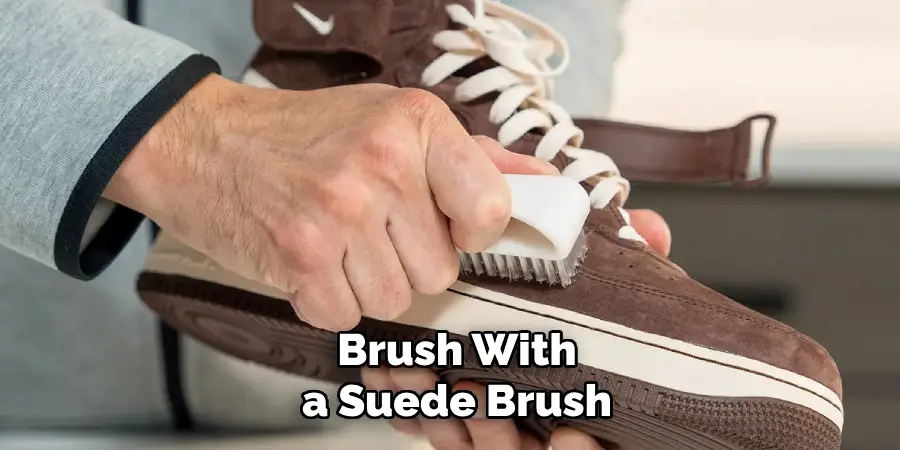
Rotate Usage:
Especially for suede footwear, rotating pairs and not wearing the same suede item daily can prevent excessive wear and tear, allowing the material to rest and recover its shape and texture.
Immediate Stain Attention:
In case of spills or stains, act quickly. Blot gently with a clean cloth and avoid rubbing, which can push the stain deeper into the suede. For more persistent stains, consider a professional cleaning.
Proper Ventilation:
After wearing, allow your suede items to air out in a well-ventilated area away from direct heat and sunlight. This prevents moisture buildup and odors from becoming entrenched in the material.
Mindful Storage:
Store your suede in a cool, dry place away from direct sunlight, which can fade the color. Use shoe trees for suede footwear to maintain their shape and invest in breathable garment bags for suede clothing.
Handling Wet Suede:
If your suede gets wet, allow it to dry naturally away from direct heat. Once dry, use a suede brush to restore the nap. Never attempt to speed up the drying process with a hairdryer or heater, as this can cause damage.
Avoid Direct Contact with Harsh Chemicals:
Perfumes, hairsprays, and other aerosols contain chemicals that can damage the suede. Apply these products before dressing in suede clothing or avoid direct application when wearing suede accessories.
Regular, attentive care and maintenance can vastly extend the lifespan of your suede items, ensuring they remain a cherished part of your wardrobe for years. By incorporating these tips into your routine, you protect your investment and continue to enjoy the unparalleled texture and luxury of suede.
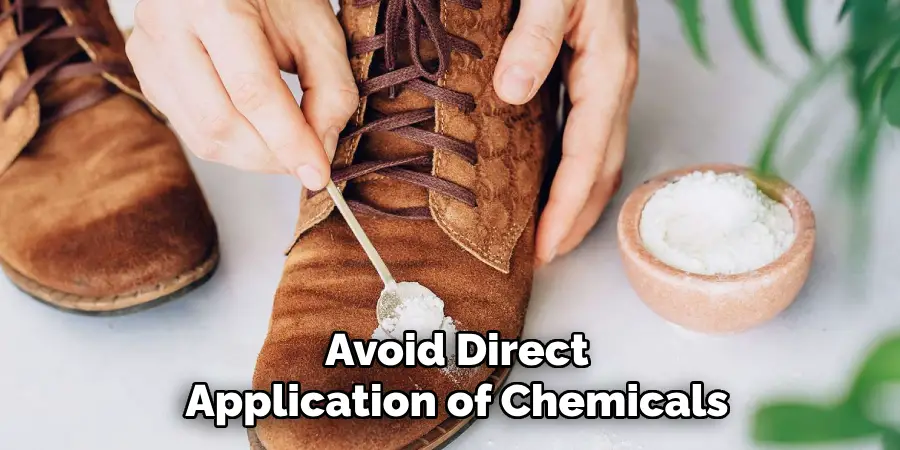
Frequently Asked Questions
Q: Can I Use Water to Clean Suede?
A: While it is possible to use water to clean suede, it should be used sparingly and with caution. Excess moisture can cause staining or damage the material, so it’s important to avoid soaking or saturating suede items. The best way to clean suede is to use specialized suede cleaning products or seek professional cleaning services.
Q: How Do I Remove Ink Stains from Suede?
A: Ink stains can be difficult to remove from suede, but it’s not impossible. The key is to act quickly and avoid rubbing the stain, as this will only spread the ink further. Instead, blot the stain with a clean cloth or paper towel, and then use a suede eraser or white vinegar to gently remove the ink. Repeat the process if necessary until the stain is gone.
Q: Can I Use a Brush on Suede?
A: Yes, brushing suede is an essential step in maintaining its plush texture and appearance. However, it’s important to use a soft-bristled brush and avoid brushing too aggressively, as this can damage the material. Always brush in the direction of the nap to lift and rejuvenate the fibers without causing any harm.
Q: How Do I Remove Oil Stains from Suede?
A: Oil stains on suede can be tricky to remove, but you can try using cornstarch or talcum powder to absorb the oil. Sprinkle the powder onto the stain and let it sit for a few hours or overnight. Then, gently brush away the powder and use a suede eraser or white vinegar to treat any remaining residue.
Q: What Is the Best Way to Dry Wet Suede?
A: If your suede item gets wet, resist the urge to use heat or direct sunlight to dry it. Instead, gently blot the excess moisture with a clean towel and then let it air dry in a cool, well-ventilated area. Do not use any artificial heat sources, as this can cause shrinkage and damage to the material. Once the suede is completely dry, you can use a suede brush to restore its texture. Ongoing care tips include regular brushing and spot cleaning as needed. By following these steps, your suede items will continue to look and feel their best for years to come. Keep your suede looking luxurious and stylish with proper maintenance and care techniques. Happy cleaning
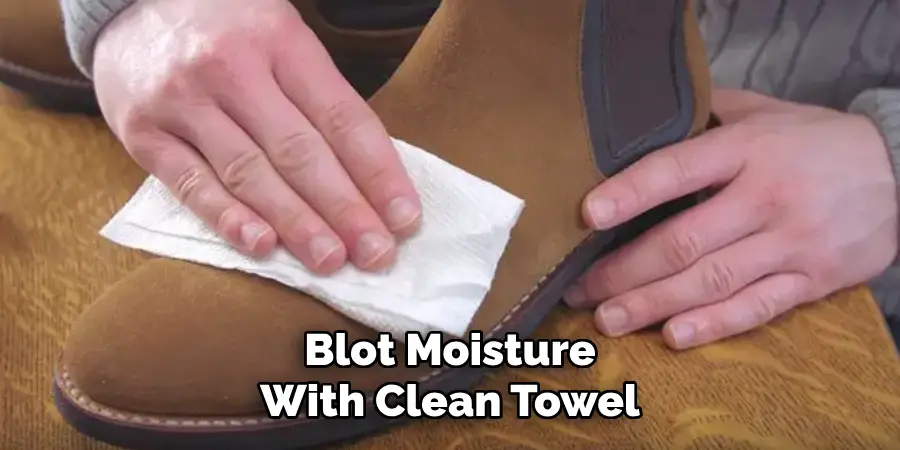
Conclusion
Caring for suede items demands attention to detail and a consistent maintenance routine to preserve their appearance and extend their lifespan. By following these nine steps on how to treat suede—from regular brushing to addressing stains, and protecting the suede with a spray protector—you can ensure that your suede items remain in prime condition for years to come.
Remember, the key to suede care is not only in how you clean and maintain it but also in how you handle spills and stains immediately after they occur. Adopting these practices into your suede care regimen will keep your items looking as luxurious and refined as the day you bought them.

